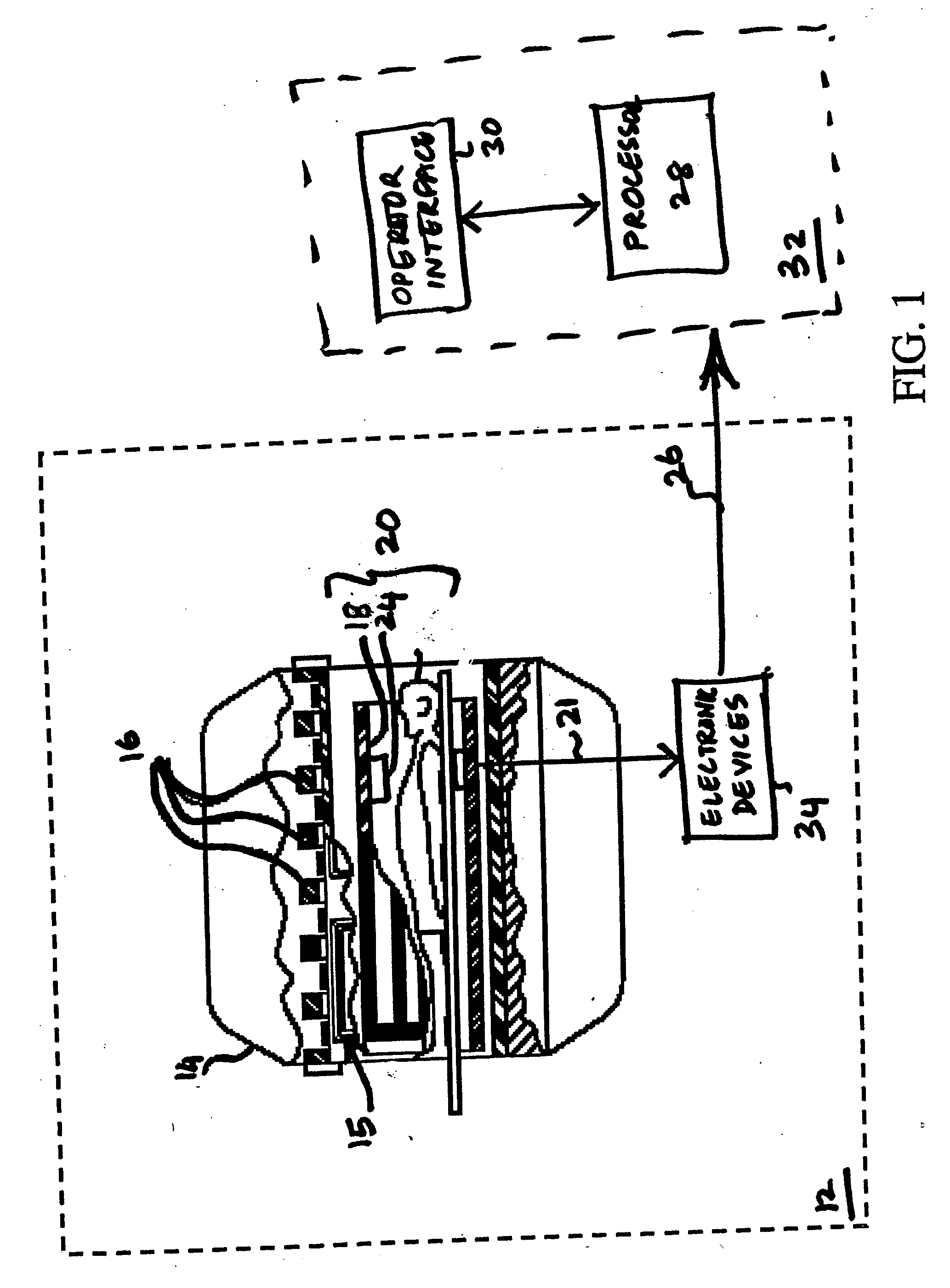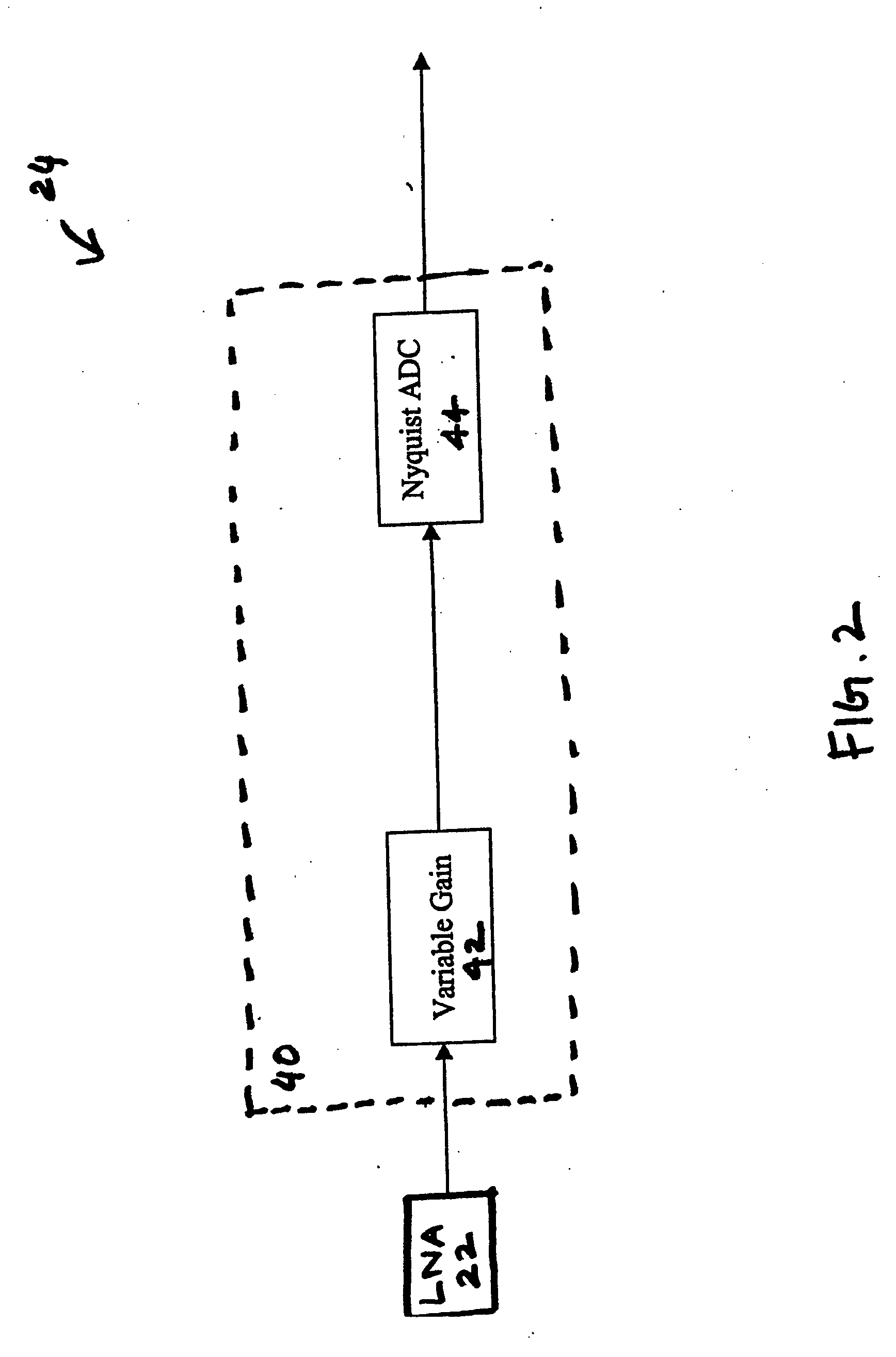Magnetic resonance detector and method
a magnetic resonance and detector technology, applied in the field of magnetic resonance systems and methods, can solve the problems of increasing the number of mr detectors in the mr system, increasing the number of conductive cables, and corresponding increase of conductive cables,
- Summary
- Abstract
- Description
- Claims
- Application Information
AI Technical Summary
Problems solved by technology
Method used
Image
Examples
Embodiment Construction
[0016]FIG. 1 is a block diagram of an exemplary embodiment of a high field magnetic resonance (MRI) system 10 which may be use in accordance with aspects of the invention. Other magnetic resonance systems such as magnetic resonance spectroscopy systems, which can be used to analyze material properties may also benefit from the present techniques. The following discussion of an MRI system is merely an example of one such implementation and is not intended to be limiting in terms of modality or anatomy.
[0017] As used herein, the term “high field” refers to magnetic fields produced by the MRI system that is greater than about 0.5 Tesla. For embodiments of the invention the high field is desirably 0.5 Tesla to 7 Tesla. The MRI system could be, for example, a GE-Signa MR scanner available from GE Medical Systems, Inc., which is adapted to perform the method of the present invention, although other systems could be used as well. Each component is described in further detail below.
[0018]...
PUM
 Login to View More
Login to View More Abstract
Description
Claims
Application Information
 Login to View More
Login to View More - R&D
- Intellectual Property
- Life Sciences
- Materials
- Tech Scout
- Unparalleled Data Quality
- Higher Quality Content
- 60% Fewer Hallucinations
Browse by: Latest US Patents, China's latest patents, Technical Efficacy Thesaurus, Application Domain, Technology Topic, Popular Technical Reports.
© 2025 PatSnap. All rights reserved.Legal|Privacy policy|Modern Slavery Act Transparency Statement|Sitemap|About US| Contact US: help@patsnap.com



